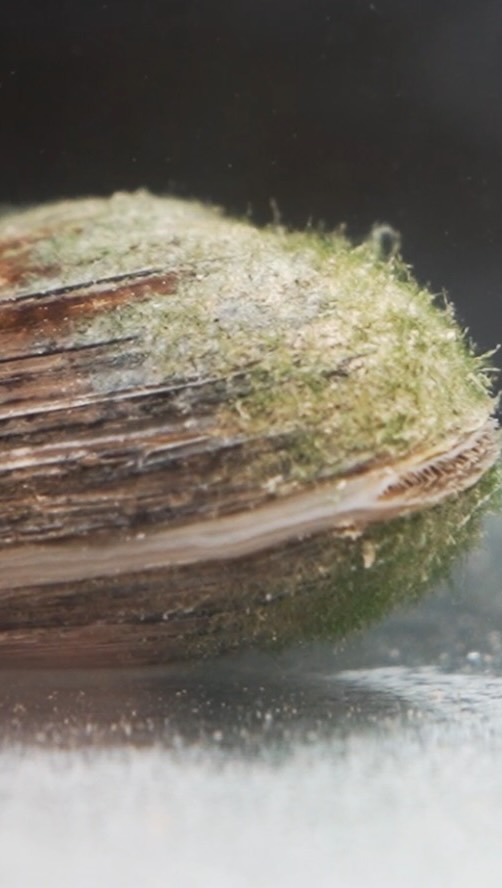- Anodonta anatina plays a critical role in aquatic ecosystems by contributing to water filtration and cleansing processes.
- The reproductive cycle of Anodonta anatina is unique as it involves a larval stage requiring a fish host.
- Conservation efforts for Anodonta anatina focus on habitat restoration and understanding their life cycle to prevent extinction.
- Partnering with a fish host is crucial for the larval development and eventual release of the juvenile mollusks into their natural habitats.
- Reintroduction of mature Anodonta anatina into their native environments aids in the restoration of local ecosystems.
Anodonta anatina, commonly known as the freshwater mussel, is a fascinating organism with a significant ecological role. These mollusks are pivotal to maintaining the equilibrium of aquatic ecosystems through their natural filtration systems, which contribute to water clarity and quality. They cleanse the water by filtering out algae, bacteria, and other particles, thus supporting aquatic life. Understanding their reproductive habits is crucial for biologists and conservationists aiming to preserve these organisms.
The reproductive process of Anodonta anatina is intricate and involves a distinctive dependence on a host fish. During breeding, the female Anodonta anatina releases larvae, known as glochidia, into the water. These glochidia are microscopic and must attach to the gills or fins of a suitable fish host to develop. Without this relationship, the glochidia cannot mature into juvenile mussels. This dependency makes their reproduction more complex and vulnerable to changes in fish populations.
Once the glochidia attach to a fish host, they undergo transformative changes. Over several weeks, they morph into more developed juvenile mussels. During this parasitic phase, the larvae draw nutrients from the host, which does not suffer significant harm. After completing this stage, the juvenile mussels detach from the host and settle into the sediment of the waterbody, continuing their lifecycle independently. This unique phase is crucial for their growth and survival.
Conservation of Anodonta anatina requires a multifaceted approach, focusing on habitat restoration and understanding their life cycle intricacies. Polluted waters, habitat destruction, and climate change pose threats to both the mussels and their host fish, complicating conservation efforts. Conservation actions often include the restoration of water quality, the protection of fish host populations, and direct intervention such as breeding and releasing programs.
The example of the project at the Piscifactoría de El Palmar highlights the dedication to saving Anodonta anatina from extinction. By successfully breeding these mussels in captivity and utilizing the required fish hosts, conservationists are working to replenish natural populations. The reintroduction of mature mollusks contributes to the revitalization of their ecosystems, reinforcing biodiversity, and stabilizing the aquatic habitats where they are released.
These efforts highlight the interconnectedness of species within an ecosystem. The symbiotic relationship between Anodonta anatina and their host fish underlines the necessity of maintaining biodiversity for healthy ecosystems. By assisting in the reproduction and reintroduction of this species, we not only preserve a unique biological process but also enhance the ecological functions that freshwater mussels perform.
Additionally, the focus on water quality in conservation efforts emphasizes the importance of maintaining clean water bodies for the continued survival of Anodonta anatina. Healthy water conditions are essential for the wellbeing of both the mussels and their host fish, ensuring the continuation of this symbiotic cycle. Pollution control and habitat enhancement are critical components of effective conservation strategies.
In summary, the existence and reproduction of Anodonta anatina are vital to aquatic ecosystems. Their reliance on fish hosts for larval development reflects a remarkable evolutionary strategy that necessitates focused conservation efforts. By understanding and supporting the life cycles of these freshwater mussels, we safeguard not only a species but the intricate web of life dependent on healthy waterways. Sustainability in these ecosystems depends on the careful and knowledgeable stewardship of both organisms and habitats, furthering our commitment to biodiversity and environmental health.
*****
Source Description
🐚✨ ¿Sabes cómo se reproducen los petxinots?
Hace unas semanas, la Piscifactoría de El Palmar de la @gvamediambient , nos cedió cuatro ejemplares de 𝘈𝘯𝘰𝘥𝘰𝘯𝘵𝘢 𝘢𝘯𝘢𝘵𝘪𝘯𝘢, un molusco autóctono en peligro de extinción. Todos ellos se encontraban en fase de reproducción.
🔬 Desde la Fundación Oceanogràfic, recogimos sus larvas, llamadas gloquidios, que necesitan un pez hospedador para completar su ciclo de vida. Sin ese pez, no podrían desarrollarse ni llegar a la edad adulta.
Así que, con mucho cuidado, los hemos puesto en contacto con los barbos para que puedan llevar a cabo este fascinante proceso natural.
🧬 Una vez alcanzan su fase juvenil, los gloquidios se desprenden del pez y continúan su desarrollo en el fondo del agua.
🌊 Además, tras liberar sus larvas, los petxinots adultos se reintroducen en su hábitat original, contribuyendo así a la recuperación de la especie.
💧 Estas acciones son fundamentales para la conservación de los petxinots. Son animales clave en la filtración y limpieza del agua de su ecosistema.

